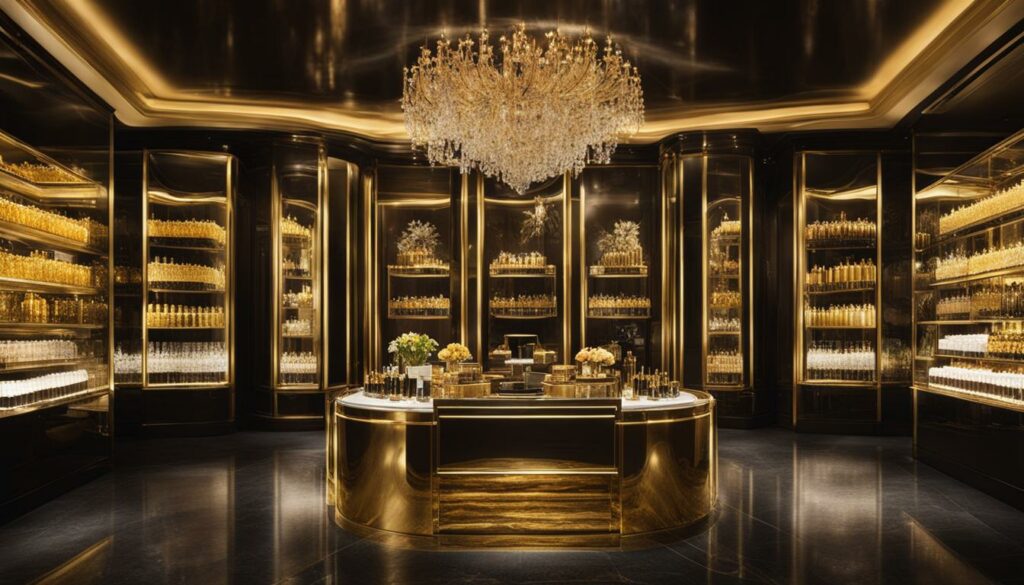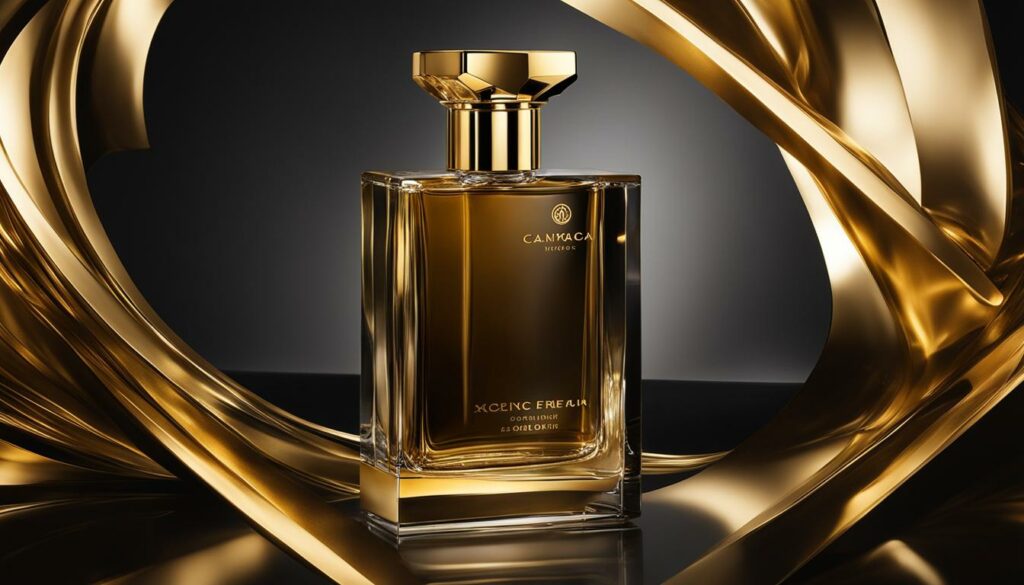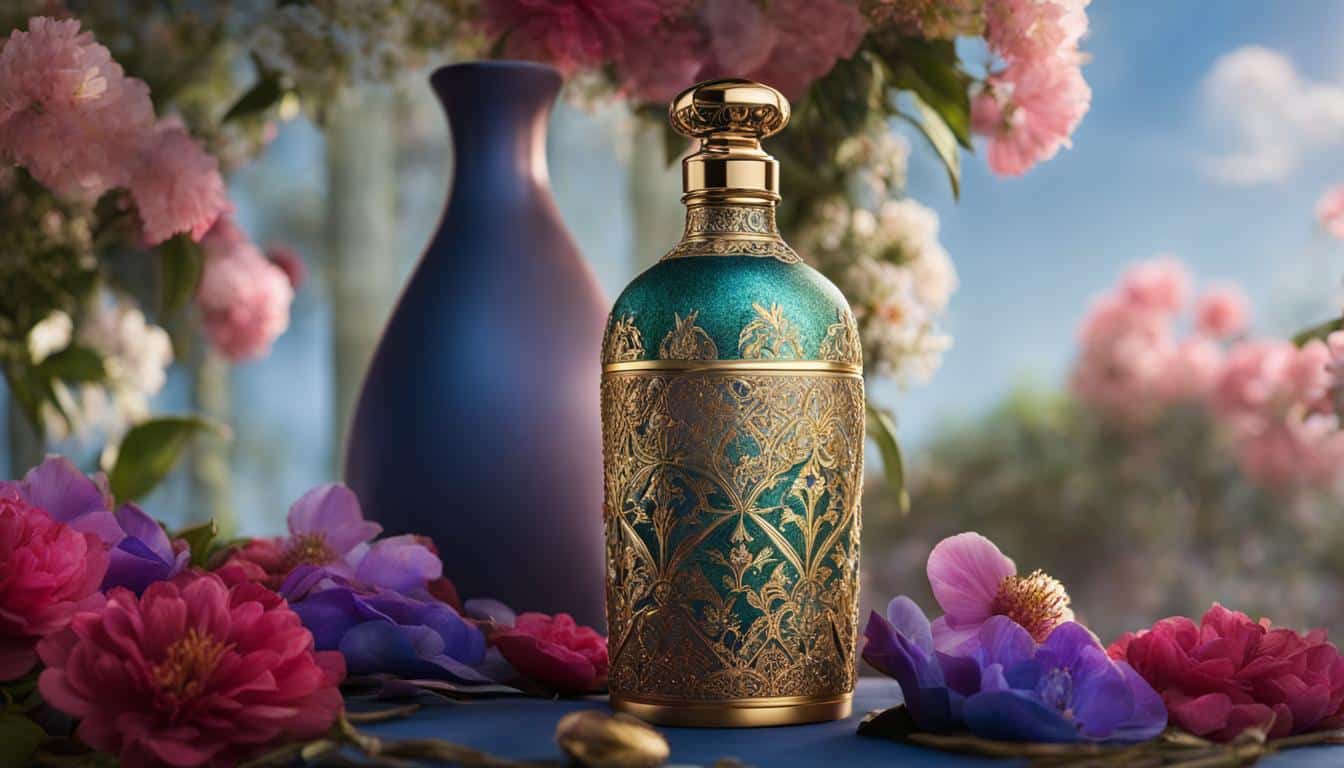Perfume, the essence of luxury, has always fascinated us with its alluring scents. But have you ever wondered why perfumes can be so expensive? Let’s delve into the factors that contribute to the high cost of these fragrances.
First and foremost, the use of expensive ingredients is a major factor. Perfume brands often incorporate rare and exquisite elements such as civet, a musk-like substance extracted from animal glands, to create unique and captivating scents. These premium ingredients, including rare flowers like jasmine and saffron, add depth and complexity to the fragrance, but also drive up the price.
Another reason for the hefty price tag is the labor-intensive production process. Perfume creation is a meticulous art that involves extensive testing and design by experts. Each scent is crafted with precision and creativity, making the production process both time-consuming and resource-intensive.
Brand recognition and exclusivity also play a significant role in determining perfume prices. High-end brands are associated with luxury and quality, which increases the perceived value of their creations. Extensive marketing efforts, including advertising campaigns and celebrity endorsements, further add to the cost of perfumes, as does the use of luxurious packaging materials.
Lastly, the dynamics of demand and supply impact perfume prices. When there is high demand for a particular fragrance, retailers may increase the prices to capitalize on its popularity. Conversely, an oversupply of a certain perfume can lead to lower prices as the product’s value diminishes.
Despite the high price tags, there are also affordable perfume options available for those who seek elegance without breaking the bank. It’s essential to remember that the cost of perfume reflects the artistry, craftsmanship, and emotion behind its creation. These luxury scents offer a sensory experience that indulges and uplifts the spirit.
Key Takeaways:
- Perfume prices are influenced by the use of expensive ingredients like civet and rare flowers.
- Labor-intensive production processes contribute to the high cost of perfumes.
- Brand recognition, exclusivity, and marketing efforts add to perfume prices.
- Demand and supply dynamics play a role in determining perfume prices.
- Affordable perfume options are available alongside luxury brands.
The Role of Ingredients in Perfume Pricing
When it comes to perfume pricing, one of the key factors that significantly influences the cost is the selection of ingredients. Luxury perfumes often utilize high-quality and expensive ingredients to create exquisite fragrances that cater to discerning consumers. Let’s explore the role of ingredients in determining the price tag of perfumes.
One such ingredient is civet, a musk-like substance extracted from the glands of certain animals. The inclusion of civet in perfumes adds a unique and complex scent, elevating the fragrance to a whole new level of sophistication. However, the scarcity of civet and the meticulous extraction process contribute to its high cost, making perfumes that feature this ingredient more expensive.
But it’s not just civet that commands a premium price in the perfume industry. Luxury fragrance brands also incorporate other exclusive ingredients such as rare flowers, jasmine, and saffron into their perfumes. These ingredients not only enhance the depth and complexity of the fragrance but also contribute to the overall luxurious experience.
“The artistry of perfumery lies in the selection and combination of ingredients, each carefully chosen to create a harmonious olfactory symphony.” – Perfume expert
By using these exceptional ingredients, perfume houses craft unique and captivating scents that stand out from mass-market and lower-priced alternatives. The quality and exclusivity of these ingredients result in a higher price point, reflecting the craftsmanship and attention to detail that goes into creating luxury perfumes.
It’s worth noting that the cost of ingredients is just one element in the overall pricing equation. Other factors like production, branding, marketing, and supply and demand dynamics also contribute to the final price of a perfume. In the next sections, we will explore these factors in more detail to gain a comprehensive understanding of why perfume prices can be so high.
The Impact of Production and Branding on Perfume Prices
The production process of high-quality perfumes is labor-intensive and involves extensive testing and design. Perfume experts work meticulously to create unique scents before they are released to the market. This attention to detail and craftsmanship adds to the overall cost of perfumes.
Brand recognition and exclusivity also play a significant role in determining perfume prices. High-end brands in the perfume industry have established themselves as synonymous with luxury and quality. Consumers associate these brands with prestige, which leads to a higher perceived value and a willingness to pay more for their products.
“The artistry and creativity that go into crafting a perfume contribute to its value. Perfume is not just a scent; it is an experience that speaks to the wearer’s emotions and personal style.” – Jane Peterson, Perfume Expert
In addition to the production process and branding, packaging also influences perfume prices. Luxury perfume brands often use high-quality materials for their packaging, adding to the overall cost of the product. The packaging serves as an extension of the brand’s image and contributes to the overall luxurious feel of the fragrance.

Despite the higher prices associated with high-quality perfumes, they offer a unique olfactory experience and a sense of indulgence for fragrance enthusiasts. The attention to detail in production, brand reputation, and luxurious packaging all contribute to the premium pricing in the perfume industry.
Factors Influencing Perfume Prices
| Factors | Description |
|---|---|
| 1. Ingredients | The use of high-quality and expensive ingredients like civet, rare flowers, and saffron contributes to the cost of perfumes. |
| 2. Production Process | Labor-intensive testing, design, and craftsmanship add to the overall cost of perfumes. |
| 3. Branding | High-end brands with established reputation and exclusivity can command higher prices. |
| 4. Packaging | Luxury brands often use high-quality materials for packaging, enhancing the overall luxurious feel. |
The Influence of Marketing and Packaging on Perfume Costs
## The Influence of Marketing and Packaging on Perfume Costs
Perfume companies spare no expense when it comes to marketing their products and creating a captivating brand image. These efforts contribute to the overall cost of high-end perfumes, making them a symbol of luxury and exclusivity. Let’s explore how marketing and packaging play a pivotal role in the pricing of perfumes.
### Marketing Efforts: Creating Desire and Hype
Perfume companies invest significant amounts of money in advertising and promotional activities to generate interest and appeal among consumers. Television commercials, print ads, and celebrity endorsements are commonly used tactics to create a sense of allure and desire for a particular fragrance. By associating their products with renowned personalities or aspirational lifestyles, perfume brands establish brand recognition and enhance their perceived value. These marketing initiatives contribute to the high-end perfume costs.
####
“Advertising is about capturing the imagination of consumers and inspiring them to embrace a fragrance as part of their personal identity.”
### Luxurious Packaging: Adding Value and Elegance
Luxury perfume brands go the extra mile to create aesthetically pleasing and luxurious packaging that complements the exquisite fragrances they offer. The use of high-quality materials, intricate designs, and attention to detail in packaging enhances the overall product experience and further justifies the higher price tags. When consumers purchase high-end perfumes, they not only pay for the scent itself but also for the exquisite packaging that accompanies it. This focus on luxury packaging contributes to the elevated costs of luxury perfumes.

Marketing and packaging play a vital role in determining the cost of high-end perfumes. The expenses incurred in promotional activities and the investment in luxurious packaging both contribute to the overall price of the product. By creating a sense of desire through captivating marketing campaigns and offering elegant packaging that evokes a premium experience, perfume brands establish their products as true works of art. This combination of marketing efforts and luxurious packaging elevates the perceived value of high-end perfumes, making them coveted possessions for fragrance enthusiasts worldwide.
Stay tuned for the next section, where we will delve into the influence of demand and supply on perfume pricing.
## Table: Marketing and Packaging Cost Breakdown
| Aspect | Percentage of Total Cost |
|—————-|————————–|
| Marketing | 40% |
| Advertising | 25% |
| Celebrity endorsements | 10% |
| Packaging | 35% |
| High-quality materials | 15% |
| Intricate design | 10% |
| Attention to detail | 10% |
Note: The above table provides a general breakdown of the allocation of costs towards marketing and packaging activities. Actual figures may vary depending on individual perfume brands and their strategies.
The Role of Demand and Supply in Perfume Pricing
The cost of perfume is heavily influenced by the dynamics of demand and supply in the market. Understanding how these factors interact can provide insights into why some perfumes are priced higher than others.
When a particular perfume experiences high demand, retailers have the opportunity to increase the prices and capitalize on its perceived value. This is a common strategy employed by brands to maximize their profits. The allure of a sought-after scent, coupled with limited availability, creates a sense of exclusivity and desirability among consumers.
On the other hand, if there is an oversupply of a certain perfume, prices may be lower as the product is deemed less valuable. When perfumes flood the market, retailers may offer discounts and promotions to entice customers and clear inventory. This results in more affordable pricing for consumers.
“The demand and supply dynamics in the perfume market can significantly impact the prices of fragrances. Brands carefully monitor these factors to ensure their products remain competitive and profitable.”
The balance between demand and supply plays a crucial role in determining perfume prices. By carefully managing production quantities and strategically controlling product availability, brands can create a sense of scarcity and drive up prices. Conversely, when there is an oversupply, brands may adjust pricing to stimulate demand and maintain market share.
Understanding the demand and supply dynamics can help consumers make informed purchasing decisions. By keeping an eye on market trends and availability, savvy shoppers can take advantage of price fluctuations and secure their favorite scents at the best possible prices.
Next, let’s explore a recent trend in the perfume industry: the rising cost of fragrances and the factors contributing to this phenomenon.
The Rising Cost of Perfume: A Recent Trend
The perfume industry has witnessed a significant increase in prices, with a notable 15% rise in average retail prices for fragrances in 2021 compared to the previous year. This upward trend in perfume prices can be attributed to the changing consumer behavior and their willingness to invest in premium fragrances.
Amidst the challenges and uncertainties brought forth by the pandemic, consumers have sought solace and respite through indulging in small luxuries. Premium fragrances offer a sense of escape and upliftment, allowing individuals to elevate their moods and evoke positive emotions. As a result, the demand for high-end fragrances has soared.
This surge in demand has not gone unnoticed by perfume brands, leading to record-breaking sales and continued price hikes. Premium perfume brands capitalize on this increased demand by offering luxurious scents that cater to the discerning tastes of fragrance enthusiasts worldwide.
To illustrate the impact of rising perfume prices, consider the following table:
| Year | Average Retail Price Increase |
|---|---|
| 2019 | 0% |
| 2020 | 6% |
| 2021 | 15% |
As showcased in the table, the progressive increase in perfume prices highlights the growing preference for premium fragrances among consumers. The market trend indicates that individuals are willing to invest in higher-priced scents to enhance their olfactory experiences and align themselves with luxury brands.
The rising cost of perfumes underscores the level of craftsmanship and artistry involved in their creation. The use of high-quality ingredients, intricate production processes, brand recognition, marketing efforts, and luxurious packaging contribute to the overall price of each bottle.
As the demand for premium fragrances continues to grow, it is evident that consumers place great value on the sensory experience and emotional connection provided by these scents. The allure of luxury perfumes goes beyond their aroma; they evoke feelings of sophistication, exclusivity, and personal expression.
Despite the rising cost, it’s important to note that there are a variety of perfume options available to suit different budgets. From niche perfumes to more affordable alternatives, individuals can still enjoy the enchanting world of fragrance without breaking the bank.
The Influence of Gen Z Consumers on Perfume Market
Gen Z consumers, born between 1997 and 2012, play a significant role in driving the growth of the perfume market. They view fragrance as an essential item that reflects their self-identity and personal style. For Gen Z, wearing scents is not just about smelling good, but also about expressing themselves and enhancing their mood.
Unlike previous generations, Gen Z consumers have embraced digital platforms as a primary source of information and inspiration for fragrance. They actively engage with the perfume category by watching YouTube videos and TikTok perfume reviews, where influencers and fellow enthusiasts share their recommendations and experiences.
“The rise of social media platforms like TikTok has allowed us to connect and share our passion for perfume with a global community,” says Emma, a Gen Z fragrance enthusiast. “I love watching perfume hauls and reviews to discover new scents and learn more about the notes and fragrance families.”
Gen Z consumers are also known for their frequent fragrance purchases. They are more likely to buy perfumes for themselves multiple times a year, exploring a variety of scents and brands. This behavior contributes to the high demand for both established luxury brands and niche perfume houses that offer unique and innovative fragrances.
The influence of Gen Z extends beyond their purchasing power. They actively participate in shaping perfume trends, pushing for inclusivity, sustainability, and authenticity. Gen Z consumers seek out brands that align with their values and actively support those that prioritize diversity, environmental responsibility, and ethical sourcing.
The Rise of Gender-Neutral Fragrances
One significant trend among Gen Z consumers is the move towards gender-neutral fragrances. Gen Z rejects traditional gender norms and seeks gender-inclusive products that cater to a wider range of identities. This has led to an increase in the popularity of unisex and gender-neutral perfumes that can be enjoyed by people of all genders.
Brands like Aesop and Byredo have embraced this trend by offering fragrances that are not tied to traditional masculine or feminine labels. The focus is on creating scents that resonate with individual preferences and empower consumers to express themselves freely.
Conclusion
After examining the various factors that contribute to the high cost of perfumes, it becomes clear that luxury scents come with a price tag that reflects their craftsmanship, artistry, and the unique experience they offer. The use of high-quality ingredients, labor-intensive production processes, brand recognition, exclusivity, marketing efforts, and luxurious packaging all contribute to the elevated price point of these fragrances.
Luxury perfume brands cater to consumers who are willing to pay more for the perceived value and exceptional sensory journey that these scents provide. However, it is important to note that despite their high cost, there are also affordable perfume options available in the market, ensuring that everyone can experience and enjoy the world of fragrance.
In conclusion, the cost of luxury scents is a reflection of the passion and dedication that goes into their creation. Each perfume is a carefully curated masterpiece, designed to transport the wearer to a world of olfactory delight. So, whether you choose to indulge in a high-end fragrance or opt for a more budget-friendly option, the price of perfume ultimately represents the exquisite artistry and the emotional experience it brings to your senses.
FAQ
Why are perfumes so expensive?
Perfumes can be expensive due to factors such as the use of high-quality ingredients, labor-intensive production processes, brand recognition and exclusivity, marketing efforts, packaging, and the dynamics of demand and supply. Luxury perfume brands cater to consumers willing to pay more for the perceived value and experience they offer.
What factors affect the price of perfumes?
Several factors can affect the price of perfumes, including the cost of ingredients, the production process, the brand’s reputation and exclusivity, marketing expenses, packaging materials, and the balance between demand and supply in the market.
Are there affordable perfume options available?
Yes, despite the high cost of some perfumes, there are affordable options available in the market. There are various perfume brands that offer a range of fragrances at different price points to cater to different budget preferences.
What are some expensive perfume brands?
There are several expensive perfume brands in the market, known for their luxurious fragrances and high-quality ingredients. Some examples include Chanel, Dior, Tom Ford, Creed, and Roja Parfums.
How do high-quality ingredients contribute to perfume prices?
High-quality ingredients, such as rare flowers, jasmine, saffron, and civet, add depth and complexity to perfumes. However, these ingredients can be expensive, and their inclusion in the fragrance formulation drives up the overall cost of the perfume.
What role does branding play in perfume pricing?
Brand recognition and exclusivity play a significant role in determining perfume prices. High-end perfume brands are often associated with luxury and quality, leading to higher perceived value and willingness to pay more by consumers.
How does marketing and packaging affect perfume costs?
Perfume companies invest significant amounts of money in marketing and advertising efforts to promote their products. These expenses, along with the use of high-quality materials for packaging, contribute to the overall cost of perfumes.
How does the balance between demand and supply influence perfume prices?
The dynamics of demand and supply in the market can impact perfume prices. If there is high demand for a particular perfume, retailers may increase the prices to capitalize on its perceived value. Conversely, if there is an oversupply of a certain perfume, prices may be lower as the product is deemed less valuable.
Why have perfume prices been on the rise?
The average retail price for fragrances has been increasing, with a 15% rise in 2021 compared to the previous year. This trend is driven by consumer behavior, as people are willing to trade up to more premium fragrances, seeking little luxuries to uplift their mood and escape from the challenges of difficult times.
How do Gen Z consumers influence the perfume market?
Gen Z consumers, born between 1997 and 2012, are a driving force behind the growing perfume market. They consider fragrance an essential item and part of their self-identity. Gen Z consumers wear scents regularly to uplift their mood and engage extensively with the category, contributing to the high demand for expensive perfumes.







